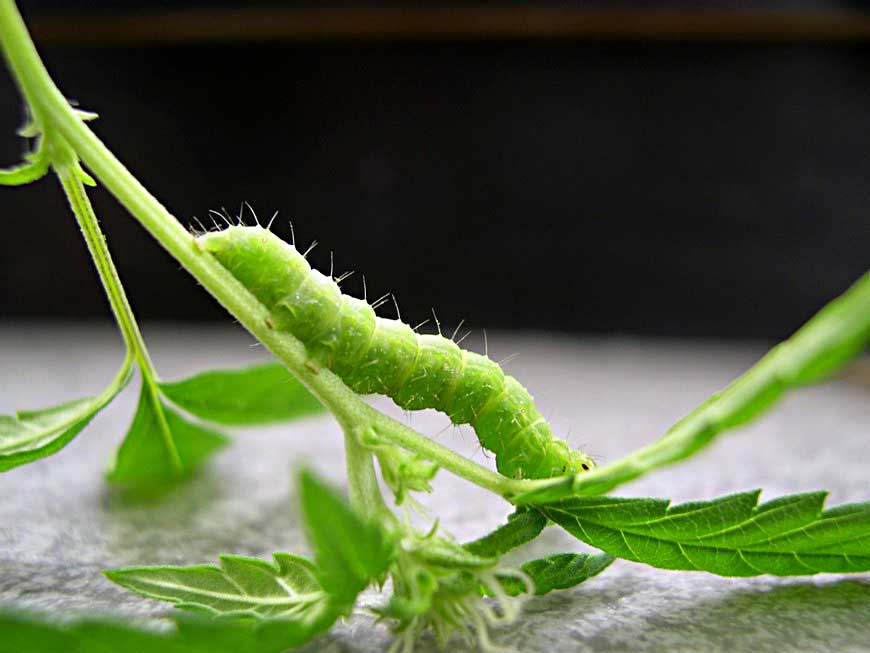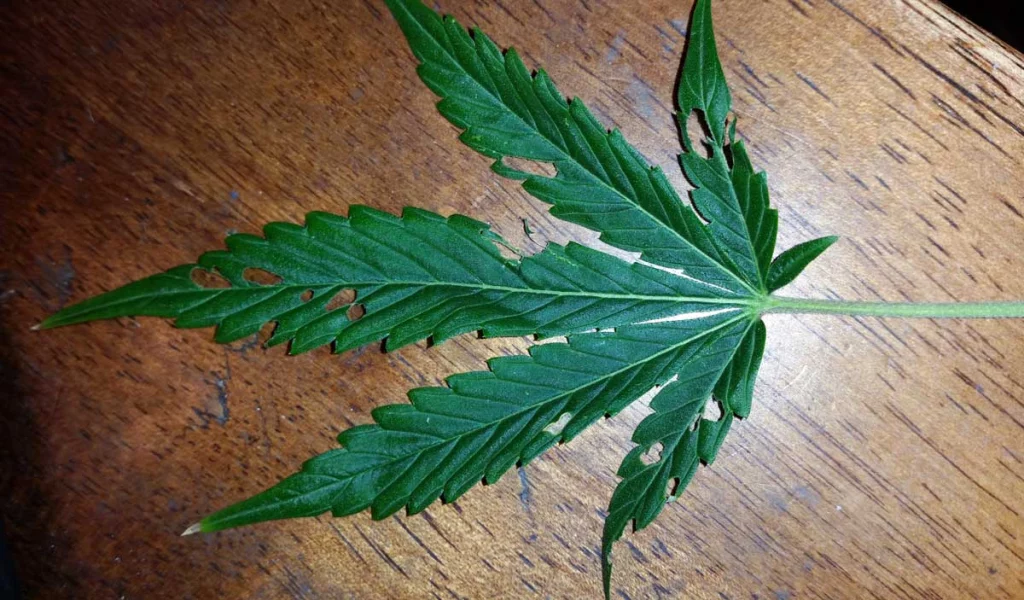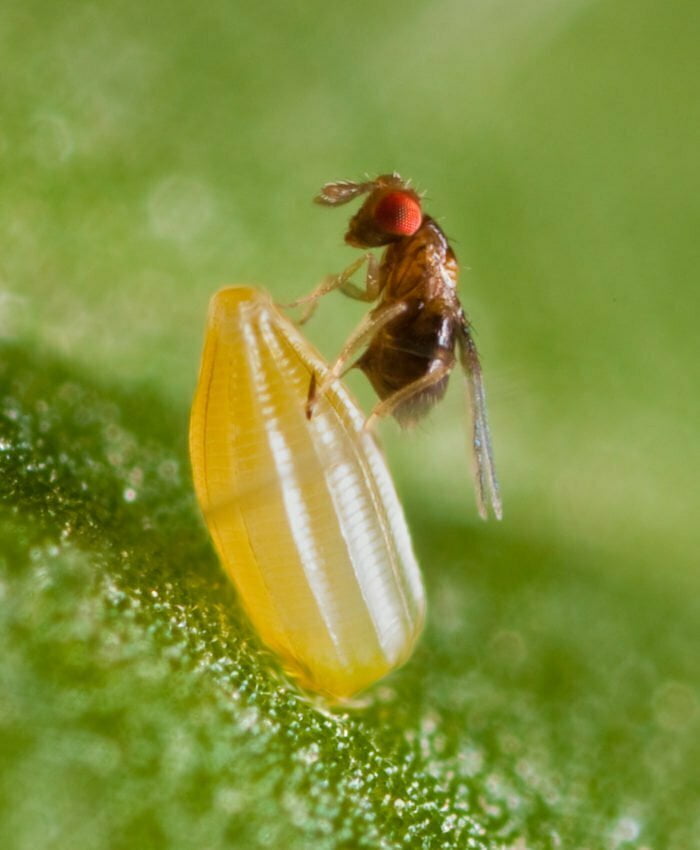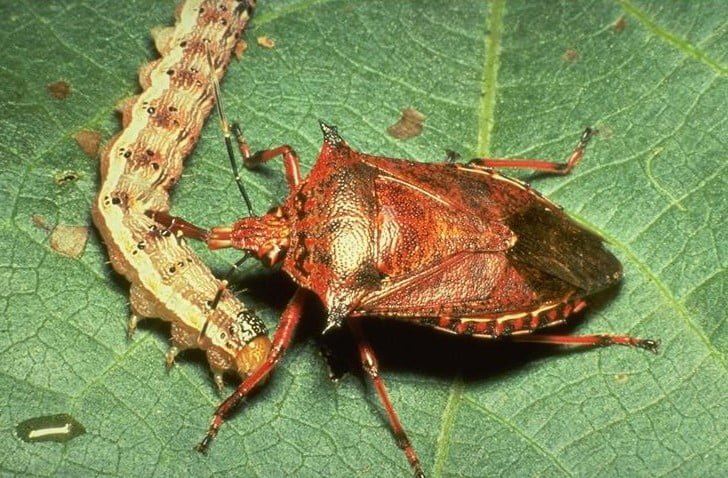English
A caterpillar infestation is the last thing marijuana growers want. These hungry crawlers can attack your plants both outside and inside. But first, let’s get some basic information about them.
Caterpillars are a species of insect larvae that belong to the family Lepidoptera. They have a cylindrical body that is divided into segments, six legs and another five pairs of false legs. Caterpillars are known for their metamorphosis stage, where they transform into beautiful butterflies. Their life cycle is simple: the butterflies lay eggs on the cannabis plant and when they hatch, the caterpillars emerge. They feed continuously until they reach the right size and have the ideal conditions to form a chrysalis. Then they turn into a butterfly inside.
During the first stage, when they are still caterpillars, they can vary greatly in appearance, from green to a range of colours. However, those that attack cannabis plants are mostly green. Caterpillars are really voracious and can destroy plant matter very quickly. You can tell an infestation by the holes they chew in the leaves.
How can you tell if your cannabis plants may be or are already being targeted by caterpillars?
The first visible sign of a possible caterpillar infestation is flying butterflies. While they are beautiful, they can lay many eggs on the plant, so beware.
Another feature is the eggs. They are not easily visible at first glance as they are on the underside of the leaf.
The chewed leaves are visible at a glance. In these cases, it is clear that you will find the pest that caused the damage.
How to get rid of these annoying insects?
First of all, as always, prevention is important. Preventing butterflies from gaining access to your plants in the ventilation openings of your greenhouse or indoor box with netting is a reliable protection. With outdoor, prevention is impossible.
If a caterpillar has already taken up residence in your marijuana crop garden, it is important that you act as quickly as possible. For the first time, you will probably take the humane route and want to remove the caterpillars manually with gloves. The sad part of all this is that if the infestation recurs, you will no longer want to be nice.
You can combine this manual labor with a homemade insecticide, which is a mixture of pepper and garlic or you can use classic insecticides containing Pyrethrum and Rotenone.
Predators that can give the caterpillars a real hard time
Trichogramma
These are tiny parasitic wasps that attack the eggs of moths and caterpillars. They lay their eggs in moth eggs, preventing the moth eggs from hatching into caterpillars. This prevents damage caused by feeding caterpillars and also breaks the life cycle of the pest. In some species, up to 5 parasitic eggs can be laid in each egg.
As the parasite develops in the butterfly egg, it turns black and after about 10 days the adult Trichogramma emerges. The adult Trichogramma can live up to 14 days after hatching.
Spined Soldier bug (Podisus maculiventris)
Adult beetles are light brown to tan and can be 8.5-13 mm long. They are shield-shaped with prominent spikes on the “arms” immediately behind the head.
Young nymphs are red and black; older nymphs are marked with red, black, yellow-orange and cream bands and spots. They are wingless and round rather than shield-shaped. Both adults bugs and nymphs have long, pointed snouts with which they sting their prey and which are folded under the body when not feeding.
And what to do with the caterpillars when they appear during the harvest of your beautiful buds? In the short term, they are relatively harmless. In the late stage of bloom, the problem is not the caterpillars, but their droppings. This can start a very unpleasant mould escapade and the cones are then unusable. So as soon as you see a caterpillar, search for others and get rid of them immediately.
Published by Peca Sarm
13/12/2021choose and buy cannabis seeds from our offer
our pleasure





























